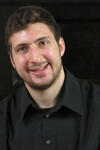Daniel Berkowitz
We have extended two recently developed theoretical methods, the Quantum Finite Elements (QFE) and the Euclidean-signature semi-classical method (ESSCM). The QFE is a technique for constructing lattice field theories (LFTs) on curved Riemannian manifolds. We extended the applicability of the QFE to formulating LFTs on certain three dimensional Riemannian manifolds such as the 3-sphere. This was done by first constructing a novel simplicial approximation to the 3-sphere. Then, after correctly computing the weights of the links and vertices that make up this simplicial complex, we defined a Laplacian on it, whose low lying spectrum was observed to approach the known continuum limit as we further refined our complex. To facilitate a comparison between the QFE and the bootstrap, we calculated an estimate of the fourth-order Binder cumulant using CFT data extracted from the conformal bootstrap.
The ESSCM is a methodology for facilitating the use of already known mathematical theorems/results to approach Lorentzian signature problems in bosonic field theory and quantum gravity in terms of their Euclidean-signature analogs. We further developed this method by applying it in a novel fashion to quantum cosmological models with matter sources. In particular, for the Taub models, we proved for the first time the existence of a countably infinite number of well behaved ‘excited’ state solutions when a cosmological constant is present. Both methods are promising and have applications for field theory, beyond standard model physics, and quantum gravity.
